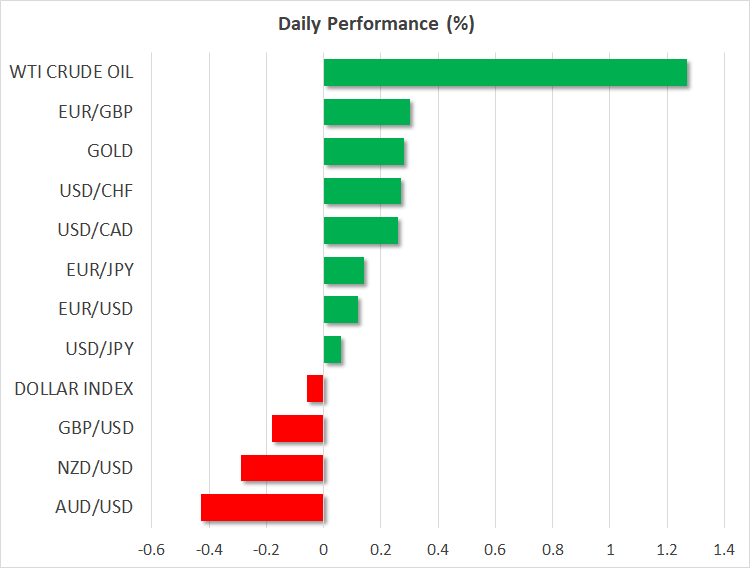- Nonfarm payrolls likely to disappoint, might even turn negative
- ECB opens door for rate hikes and faster taper, euro soars
- BoE raises rates, announces balance sheet reduction
Weak payrolls unlikely to keep dollar down
The latest US employment report will be in the spotlight today. Nonfarm payrolls are forecast to have risen by 150k in January, but market participants are probably positioned for a much weaker print by now.
Nonfarm payrolls are calculated from survey data that is collected in the second week of each month. In January, this was the week when covid cases peaked as Omicron spread uncontrollably. If someone was out sick during this week and was not getting paid sick leave, they would be counted as unemployed.
Hence, this could artificially skew nonfarm payrolls lower for the month, and a negative number cannot be ruled out. The case for a disappointing print is supported by several labor market indicators, such as the ADP report, jobless claims, and the employment index of the ISM services survey.
In the markets, the knee-jerk reaction in the dollar might be negative as trading algorithms react to a disappointing nonfarm payrolls print. However, any weakness is unlikely to last long, since a soft number wouldn’t represent the true state of the labor market, which is actually quite tight.
Indeed, Fed officials like Thomas Barkin have already said they would view any disappointment as a temporary setback given the covid numbers over that period. For the Fed, wage growth is the most important metric at this stage of the cycle, and if that fires up today, it could overshadow any misfortune in payrolls.
ECB opens door to higher rates
The European Central Bank poured gasoline on speculation that higher interest rates are on the menu for this year, stressing that inflation may be stickier than expected and that monetary policy will likely have to respond. Reports after the meeting said “a sizable minority” of policymakers had pushed for immediate action, and that tapering will likely be accelerated next month.
In essence, the ECB wants to speed up the taper process so that it has the option to raise rates later in the year, if the inflation outlook demands it. All this ignited a stampede in the market as traders rushed to price everything in, catapulting European yields higher and sending the euro into overdrive.
Around 50 basis points of rate hikes are now priced in by year end, which is probably on the optimistic side of what is possible given the state of the economy but not completely unrealistic. While euro/dollar is riding this ECB repricing higher, the big picture hasn’t fundamentally changed so long as euro area wage dynamics remain muted, and another hot US inflation print next week could turn the momentum around.
BoE hikes, stocks ride the rollercoaster
The Bank of England did not disappoint either. It raised rates by a quarter-point and announced plans to reduce its balance sheet, but sent a very hawkish message with four of the nine officials voting for an even larger rate increase to combat inflation.
The message was loud and clear - inflation may be persistent, so all options are on the table. Markets are currently pricing in another five rate hikes for this year, which seems a little aggressive. The pound spiked higher on the news but quickly surrendered most of its gains, with euro/sterling reversing in spectacular fashion after the ECB also raised the stakes.
In the equity space, Wall Street lost ground as higher yields and the fallout from Facebook (NASDAQ:FB) dampened the mood, although some blockbuster results from Amazon (NASDAQ:AMZN) after the bell seem to have restored order to the force. Finally, oil prices continue to trade like a rocket ship, encouraged by signs that OPEC members might not have the firepower to meet their production quotas.



